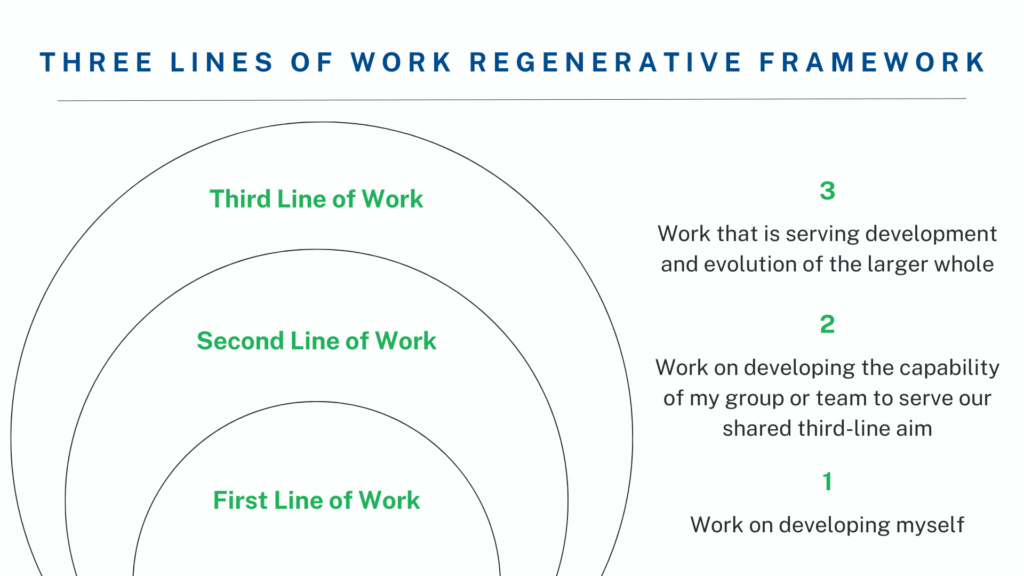Let’s walk through the lines of work with the example of stopping harm in the housing industry. While the example of stopping harm in the housing industry is more broad, we’ll use it as an introductory example, with the understanding that when using regenerative frameworks, it’s important to stay anchored in concrete projects or ideas. Specificity is key! They work best when we move from imagining a situation to imaging the potential we hope to enable.
Aim: Identifying intersectional layers within myself that relate to how I show up in my job, how I move about my life, how I have access or privilege, and where I lack access or privilege.
Concrete Action: Gaining knowledge through resources like, “Just Action How to Challenge Segregation Enacted Under the Color of Law” by Richard and Leah Rothstein and implementing intentional equitable practices into my work.
Aim: Diversifying + expanding the field or network we’re working in to include a range of stakeholders + changemakers in a more equitable, regenerative, and collaborative way.
Concrete Action: Hiring an external Diversity, Equity, Inclusion, and Justice consultant to audit our internal and external processes, with the aim of building out an Equity Action Plan to develop and fully integrate a comprehensive DEIJ program into Build It Green’s structures, work processes, and organizational operations.
Aim: Disrupting the structured harmful processes in which we practice planning, architecture, and housing development in California, all of which we know have been built and rooted in exclusionary and racist policies, with the aim of completely restructuring the way we practice housing development to be instead rooted in equitable and regenerative methods.
Concrete Action: BIG creating the Innovation Fund to build long lasting capacity within communities on regeneration, equity, and transformational impact by awarding up to $200,000 to support work that showcases the Network’s impact themes.
By processing my ideas around how to stop harm in the housing industry through the Lines of Work regenerative framework, I was able to visualize the vital importance of pursuing the work holistically, knowing that the individual actions needed to be taken to development my and my team’s capacity cannot be separate from our ultimate vision for collaboratively development a housing industry that is equitable and regenerative. The framework supports us in feeling centered on specific aims, while still holding the bigger picture in view. As we begin to kick off the planning process for the various initiatives brought forward at the Gathering, BIG intends to ground in regenerative and equitable processes in a collaborative way. We will be hosting workshops within our Regenerative Communities Program, where participants will learn regenerative frameworks to help bring an elevated level of consciousness to the work they’re doing. We encourage you to join us in engaging with these frameworks with your own concrete ideas, and let us know how it goes!


